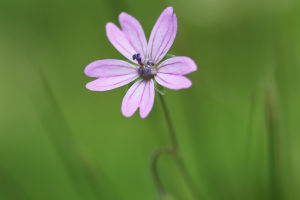The beauty and symbolism of white cherry blossoms have played an important role in human culture.
These soft, white flowers, with their elegant form and short life, have touched people's hearts.
There are many types of cherry blossoms, but white cherry blossoms are a special kind. While pink cherry blossoms are well known and can be seen in many places in spring, white cherry blossoms attract people's attention with their unique purity and tranquility.
White cherry blossoms are not only a beautiful landscape plant but also carry rich cultural connotations. Cherry blossoms have a very important position in Japanese culture, symbolizing the brevity and fragility of life.
Every spring, the arrival of cherry blossom season gives people an opportunity to reflect on the impermanence of life. White cherry blossoms highlight this elegant symbolism more than pink cherry blossoms. The white petals give people a sense of tranquility and contemplation, making them think about the nature of life involuntarily.
White cherry blossoms are particularly suitable as their white color symbolizes purity and innocence, which is not only moral but also includes the perception of the brevity and rapidity of life.
The short blooming time of white cherry blossoms is also a metaphor for the fleeting nature of life.
The short blooming time of white cherry blossoms also makes people cherish them even more. Every spring, white cherry blossoms only bloom for a few days, and in this short time, they can impress everyone who sees them with their incredible beauty.
This combination of brevity and beauty in nature makes white cherry blossoms a perfect symbol in the minds of many people. They not only make people indulge in their external beauty but also make people ponder the philosophical meaning behind them.
The beauty of white cherry blossoms is not limited to their visual appeal. Their fragrance is also extremely fresh, which makes people feel peaceful and tranquil.
In Japanese and Chinese garden designs, white cherry blossoms are often used to create a tranquil atmosphere, especially in temples or corners of gardens, where viewers can savor their beauty and fragrance in a quiet environment.
The presence of white cherry blossoms makes such places more sacred and peaceful, allowing people to find a moment of peace and reflection in the embrace of nature.
With the progress of globalization, white cherry blossoms are no longer just a symbol of East Asian culture. They have gradually gone global and have been accepted and loved by more and more countries and regions. In Washington, D.C., the United States, the Cherry Blossom Festival every spring attracts thousands of tourists, including many white cherry blossom lovers.
These white cherry trees were a gift from Japan to the United States in 1912, symbolizing the friendly relations between the two countries.
Today, these cherry blossom trees have become one of the iconic landscapes of Washington, especially in spring, when the white cherry blossoms set off against the background of the Washington Monument, forming an unforgettable beauty.
However, the beauty of white cherry blossoms is not only in their blooming in spring. Their tree shape is beautiful, and their branches are elegant. Even in the season when they are not blooming, they give people visual enjoyment with their unique tree shape. In winter, the branches of white cherry blossoms stand in the cold wind, showing another form of beauty. This contrast and change allow people to feel their different charm in different seasons.
White cherry blossoms are not only loved by people in visual and symbolic terms but also carry a deep emotional connection between people and nature. Whether in ancient or modern times, people have always found some kind of resonance in these ephemeral and beautiful flowers. They remind us to cherish every moment of life and contemplate the passage of time, while also allowing us to find inner peace in the pure beauty of nature.
As a masterpiece of nature, white cherry blossoms are not just a seasonal spectacle but also a profound reflection of life, time, and beauty.


